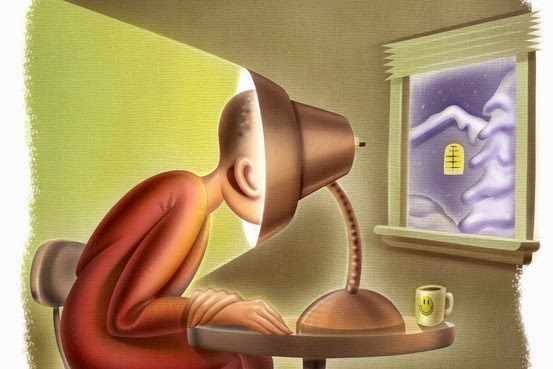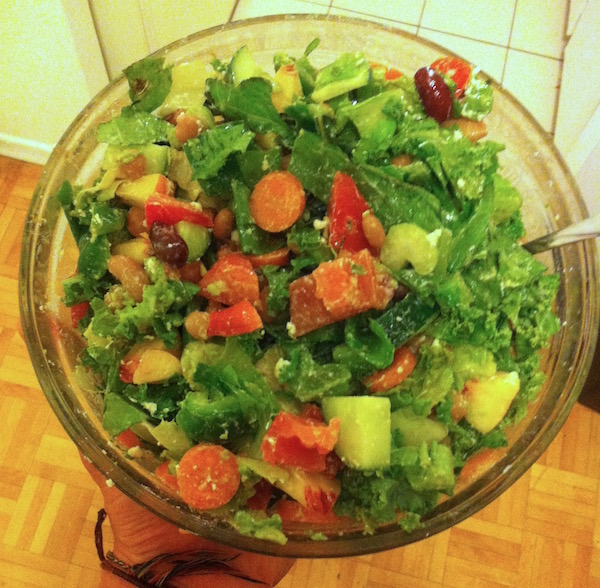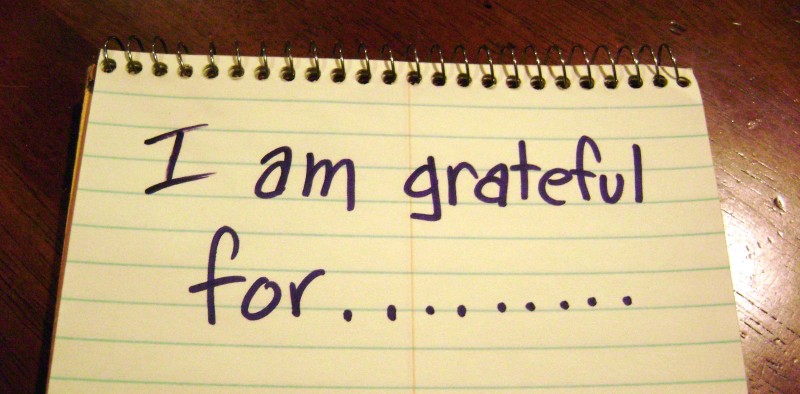In previous years I have struggled somewhat with winter depression, also known as Seasonal Affective Disorder (SAD). To put it mildly, it’s fucking awful.
The worst case of “Winter Blues” I ever had was a few years back when I was home on the West coast of Canada for the holidays. The winter weather there, especially where I grew up, is cold, wet, and overcast for most of the day until it gets dark in the mid-afternoon. It’s easy to not see the sun for days or even weeks at a time.
I had had SAD before but never really recognized it for what it was. There was always plenty to occupy myself at university and it would have been hard to isolate symptoms or a cause.
But back at home over this holiday season there wasn’t much going on. I was dealing with some business stuff that was stressful and combine that with not seeing the sun for days or weeks at a time, and I got depressed.
What did it feel like? Like slowly being sucked down into a dark sinkhole inside myself. Like my insides were gradually collapsing in on themselves. Everything was collapsing, in fact, very slowly and in this sort of ultimately destructive and completely hopeless way.

I experienced what you normally hear about not enjoying things anymore and not having energy or motivation. It somehow didn’t feel “worth it” to do pretty much anything.
The only times I wasn’t depressed was when I felt anxiety. I woke up every morning with anxiety and then would sink into depression at some point, fluctuating back and forth between the two throughout the day. I would get anxiety when doing normal everyday activities like riding the bus or walking on the street.
My thoughts were very negative during this time and it was a battle just to “be there” in my own mind. My perspective became seriously warped and the default way of looking at things was one of negative expectation or hopelessness. I would make judgements about aspects of my life that were horribly harsh and negative in hindsight but seemed accurate and true at the time.
As I was coming out of the depression I was able to look back on this period and assess it from a more balanced point of view. I saw that in objective and quantifiable terms that progress in most areas of life had actually been fine, whether it was finances, fitness, productivity or whatever else. But my perspective was so warped by the state I was in that everything had seemed like shit.

Some good things did come out of this. I learned a lot about my thinking habits and the workings of my mind. I learned how seriously the weather can affect my mood and what this feels like when it’s starting to happen. Maybe most importantly I learned how to deal with depression and effectively resist winter blues/SAD in the future.
I haven’t had SAD to anywhere near the same extent since, and I hope I never do again. I don’t *think* I will, but there is really no way to know.
In any case, that’s a brief account of probably the worst I’ve ever felt in my life for an extended period of time. If you share even some of these symptoms, I feel your pain. If you are in a worse state than I was, which is very possible and probably even relatively common, keep taking it day by day and you will make it through.
The rest of this post is a list of my top suggestions for resisting SAD, anxiety and the symptoms of depression.
You have to “fight off” SAD
In my experience SAD/winter depression is something you need to actively fight off throughout the weeks or months you feel it. There is no single thing you can do to “cure” the depression or make it permanently disappear. The goal then is not to completely eliminate it, but rather to keep it at bay throughout the winter and for the time it will naturally last for.
The depression will go away on its own at some point, but up until then you’ll likely have to do things every single day to fight against it. You will need to address it on both physical and psychological levels because the mind and body are one.
The aim is to get yourself through this difficult period with as little suffering as possible internally, while also remaining as functional as possible in your day-to-day life in the outside world.
Cardio (#1 Recommendation)
When my symptoms were at their height I went to see the doctor to ask about it. In particular I was having serious anxiety in the mornings and social anxiety when doing normal everyday activities like riding the bus, walking on the street, and even speaking to the doctor at that very moment.
(At the time I didn’t quite understand the relationship between depression and anxiety, but most people with one also suffer from the other.)
I told the doctor what I was experiencing and asked, “At what point does this stop being a psychological problem and become a medical problem?”
She said, “Well, it’s all just chemicals in the brain.”
She asked if I was exercising and I said yes, I lift weights 4-5 days a week. She said, Do you do any cardio? You have to get your heart rate up.
Of course I knew “exercise” was important, but had always assumed I was doing fine with frequent weight training.
But for the purposes of fighting off depression and anxiety, you need a specific physiological response from the body that cardio provides. Cardio releases endorphins, serotonin and a combination of pleasure chemicals in the brain that lower intensity exercise does not.
(Yes, you can lift weights with high intensity, but if the goal is to cause a mood-enhancing chemical response from the body then there is really no comparison.)

Run or cycle with high intensity for 45 minutes to an hour. This is my absolute #1 top recommendation for fighting off depression/anxiety. It’s deceptively simple but it really works.
After that meeting with the doctor I started doing high intensity cardio several times a week, usually cycling on a stationary bike. I noticed the effects immediately after the first session, and cardio became almost like medicine that I could “dose” myself with. If I was starting to feel down or particularly bad on a particular day, I knew I had to do some cardio.
Cardio creates a positive mental and emotional state (“runner’s high”) that lasts throughout the workout and for the next few hours. It has the potential to bring about feelings of “Everything is going to be OK” or “Everything is going to be great!” even in the midst of deep depression.
You also get a lasting effect of calm, wellbeing and tranquility that can last much longer than the exercise session. There is a large body of research supporting the effectiveness of exercise in treating depression.
Running or cycling are great, and I’ve also found that walking on a treadmill can work, provided it is on a steep incline at a high enough speed. The goal is just to increase your heart rate for 45 minutes to an hour. You will probably starting feeling the positive effects at around 20-25 minutes in, but I would recommend 45 minutes to an hour just to be safe.
Meditation (#2 Recommendation)
If cardio is the best physical activity you can do to fight off depression/SAD, meditation is the best mental activity.
One of the worst aspects of depression and anxiety is the way it affects your thoughts. Patterns of thinking can become extremely negative, with a tendency to look at everything in the worst possible light.
It may seem like these thoughts are true or that you are “just being realistic” at the time, but then later from a more balanced place you see that your perspective was warped.
One can also slide into a self-reinforcing cycle of negative thoughts and negative emotions. Your mood is bad, which makes your thoughts bad, which makes your mood even worse and so on. It can turn into a truly dark spiral that is extremely hard to escape from.
Meditation, in my experience, is the best way to deal with the psychological side of depression and anxiety. In this context, meditation is best thought of as a tool for developing a relationship with your thoughts and your mind.

Meditation allows you to take a step back and create some space between you and your thoughts. It leads to the understanding that you are not your thoughts and that you don’t even necessarily need to “think” a certain thought that has appeared in your head.
A simple meditation or mindfulness practice can truly do wonders for your life – but it is particularly valuable during periods of depression and anxiety. A large body of research supports this claim, including a new meta-analysis recently published by Oxford University.
During the worst periods of my winter depression/SAD, negative thoughts came faster and more intensely than every before. I was lucky enough to have already had been practicing meditation for several years and I could feel the difference it made. Meditation and mindfulness allowed me to keep my head above the torrent of negative thoughts much more so than I would have been able to otherwise.
You can read more about meditation in the following posts:
I also have a PDF with information and links to free online resources for meditation that you can access here.
The specific meditation you do is much less important than doing any type of meditation at all. Just pick one and start and you will learn and figure out more as you go.
Cardio and meditation – those are by far my top two recommendations for treating winter depression/SAD. I discovered the effectiveness of these two methods independently, but in doing research for this article actually found that there is another study demonstrating the effectiveness of both together.
More Suggestions for How to Beat Depression, Anxiety & SAD
The following are more minor recommendations that, while not as effective as the above two, can still make a significant difference for your mood and wellbeing.
Pay attention to your inputs
What I mean by this is pay close attention to the informational or energetic inputs in your life and how they affect you. During normal times you can deal with a certain amount of negative input and still feel and function just fine, but during a time of depression/anxiety any negative inputs will affect you much more severely.
My recommendation is to eliminate all the negative inputs you can. This includes all forms of media (movies, TV shows, books, audio) and even real life events or people that impact you in a negative way. While there is certainly value in learning about and understanding unpleasant things about the world, the time to do it is not in the midst of depression.
At the same time, try to increase the amount of positive input in your life. Positive inputs do improve well-being and decrease depressive symptoms (study). Only listen, watch, and read things that make you feel good. Do your best to only be around people who make you feel good. You need to be lifted up during this period and not pulled further down.
Get an SAD light/Source of artificial light
An SAD light is an electronic light that imitates the sun. You sit in front of it for a certain amount of time each day and it provides some of the benefits you would otherwise get from sunlight. Of course it is not as good as the real sun, but it does make a difference.

I used one called the Litebook, and there are plenty of options on Amazon. These SAD lights are generally affordable and a useful tool to combine with the other methods listed here.
Take Vitamin D
You may already know this one. Take a Vitamin D supplement to replace the Vitamin D you’re not getting from the sun during dark winter months.
Eat Healthy Food (Vegetables) and/or Green Juice
Eating large amounts of vegetables, whether in solid or liquid form, really does change how you feel. Here’s how to make great salads and here’s how to make green juice.

Change your body language
It’s been shown that body language affects how we feel internally. You can use the same principles to resist depression. Avoid sitting or standing in ways that hunch over your upper body. Open up your arms and chest and stand up straight. Change your facial expression to a smile. Smiling, even when forced, decreases stress (study).
The key to changing body language during depression is to do it even when you don’t feel like it. It is difficult, but effective.
Take cold showers or contrast showers
I’ve had great experiences with cold showers and there are many reports online with similar positive results. Simply take a regular shower and then at the end, turn the water to cold and stay under it for a few minutes. A contrast shower is the same but where you alternate a few times back and forth between hot and cold.
Comprehensive research on cold exposure and depression is forthcoming, but existing studies point in the right direction.
“Exposure to cold is known to activate the sympathetic nervous system and increase the blood level of beta-endorphin and noradrenaline and to increase synaptic release of noradrenaline in the brain as well. Additionally, due to the high density of cold receptors in the skin, a cold shower is expected to send an overwhelming amount of electrical impulses from peripheral nerve endings to the brain, which could result in an anti-depressive effect.”
From the abstract of “Adapted cold shower as a potential treatment for depression“.
You could also experiment with the Wim Hof Method, in which cold exposure is one of the main components.
Gratitude
Start writing in a gratitude journal a few times a week. Gratitude has been shown to reduce depressive symptoms (study) and works as an effective antidote for most negative emotions.

Simply write, “I am grateful for…” and then write whatever comes to mind. Think about the large and small things in life, the gifts you have been given by people or by circumstances. Consider how great it is to have friends, family members, a home or enough food to eat. There’s plenty more and a lot to be grateful for.
Get any sunlight you can
This may go without saying but during dark and cold winter months it is imperative to try and get any tiny bit of sunlight you can. Even five or ten minutes makes a difference. Go far, far out of your way to be in the sun. Make a point of going outside when it’s sunny or sit by a window inside to get the sun on your skin. After all, it is the lack of sun in the first place that is causing the winter depression.
That’s it – all my suggestions for fighting off winter depression, anxiety and SAD. I hope this is helpful wherever it finds you and good luck!